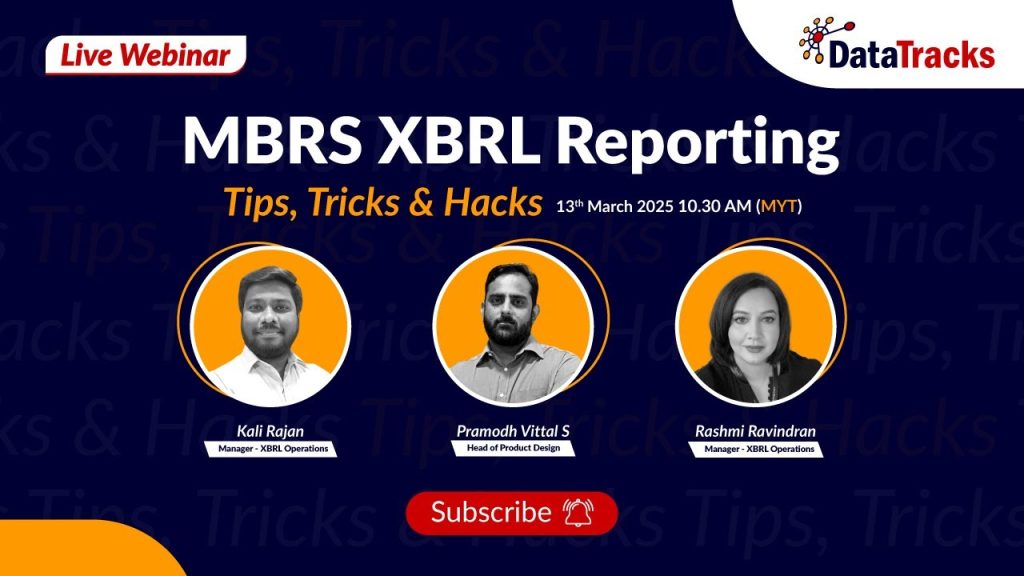DataTracks Glacier
DataTracks Glacier
DataTracks Glacier for FERC Reporting
Simplify your FERC compliance with DataTracks Glacier. Our cloud platform converts spreadsheets into precise, error-free XBRL reports, supported by collaborative workflows and secure cloud hosting, making FERC reporting faster and easier than ever.
DataTracks Glacier helps users to perform regulatory filings in complex formats such as XBRL or XBRL-CSV. Many regulations are covered. Validated outputs can be generated as per the requirements of the local jurisdiction’s regulator. Aim is to make the regulatory filing process a seamless and hassle-free experience for users.
What is FERC?
The Federal Energy Regulatory Commission (FERC), is an independent agency that regulates the interstate transmission of electricity, natural gas, and oil. FERC administers accounting and financial reporting regulations and conduct of FERC regulated companies. Learn more
FERC adopts XBRL for utilities reporting
FERC has decided to implement XBRL (eXtensible Business Reporting Language) from 2021. Filing starts from November 2021 for quarterly reports and from April 2022 for annual reports. XBRL will make financial reporting easier for filers and help investors analyze financial and business information better. FERC’s transition to a standardized machine-readable reporting language is expected to decrease the costs involved in financial statement submission.
DataTracks’ solution for FERC reporting
DataTracks extends its flagship Data Point Model (DPM) based product ‘Glacier’ for FERC reporting. Glacier is extensively used by insurance companies and financial institutions in the European Union for preparing their regulatory compliance reports in XBRL.
DataTracks’ solution offers
- Seamless transition from Microsoft® Excel (any spreadsheet) to XBRL
- Ease of working with FERC templates
- User friendly and self intuitive work flow
- Collaborative environment
- Information security
- Easy integration of multiple data sources
DataTracks Glacier for FERC Reporting
Our Value Proposition
- Cloud based solution
- Familiar template driven approach
- Flexible data consolidation
- Collaborative workflow
- Comprehensive validation of reports
- Automatic updates to taxonomy and validation rules
- Extensive customer support during filing season
Spreadsheet based UI
Glacier incorporates the digital spreadsheets that is similar to the structure of FERC templates enabling easy navigation and quick adaptability.
Role based access
An administrator can limit access to a subset of user functions and accounts. This enables an additional level of security.
Version compare
Users can compare two versions or reports within the same reporting period and between two reporting periods, saving review time significantly.
Inbuilt comprehensive validation
Glacier can process thousands of FERC validation rules quickly and display the results online; results can also be exported for offline review. Users can filter and search hyperlinked validation results and navigate to relevant templates easily for a seamless experience.
Audit trail of changes at data point level
Comprehensive audit trail captures user details along with date and time stamp for changes made at data cell level. Users can also export the audit trail report into excel for offline review.
Pass comments at data point level
Users can discuss with each other through comments at each data point. An Excel version of the output is made available for offline references.
Direct submission to FERC
Glacier’s filing module enables authorized users connect with the FERC portal and submit XBRL reports directly, ensuring integrity of filing data.
Timely updates to taxonomies
New taxonomy versions and validation rules are updated automatically without the need for complex download or installation processes.
Hosted on a secure cloud
Glacier is designed on a scalable architecture hosted on a secure cloud that assures high availability and keeps the application’s performance intact.
Featured Content
What are SEC filings, and why are they important?
The U.S. Securities and Exchange Commission (SEC) is an independent federal government regulatory agency responsible for safeguarding investors, maintaining fair and orderly functioning of the securities markets, and facilitating capital formation.
SEC filings are essential regulatory documents required of all public companies to provide critical information to investors or potential investors.
SEC filings delivered through EDGAR offer transparency and crucial information for individual and institutional investors, analysts & researchers, and regulators.
Their prominence lies in empowering investors to make informed decisions, identify potential risks, and seize opportunities in the investment landscape.
What are the different types of SEC filings?
SEC filings offer investors crucial information about a company’s financial performance, business plans, and risk factors.
- Annual reports (Form 10-K)
- Quarterly reports (Form 10-Q)
- (Form 8-K) – An 8-K is a report of unscheduled material events
- Proxy statements (Form DEF 14A)
- Registration statements (Form S-1, Form S-3, etc.)
- Foreign Private Issuers with listed equity shares on exchanges in the US to file 20-F annually
- Canadian Companies listed in the US to file 40-F annually
- Other filings, such as 488BPOS, Form 497 for mutual funds
Which format is required for SEC filings?
The SEC requires all public companies to file their annual reports and proxy statements in iXBRL format. Quarterly reports and other filings can be filed in HTML or XBRL format, but iXBRL is preferred.
Who is required to use the US GAAP or IFRS Taxonomy for SEC filings?
All publicly traded companies in the United States are required to file their financial statements with the SEC in iXBRL format. This means that these companies must tag their financial statements with the US GAAP Taxonomy.
Foreign private issuers (FPIs) that are listed on US stock exchanges are also required to file their financial statements with the SEC in iXBRL format. However, FPIs are not required to use the US GAAP Taxonomy. They can instead tag their financial statements with the IFRS Taxonomy or another XBRL taxonomy that is approved by the SEC.
How can DataTracks help me to file SEC reports in iXBRL format?
DataTracks offers a cloud-based solution called DataTracks Rainbow that can help you prepare and file your SEC reports in iXBRL format.
With DataTracks Rainbow, streamline your SEC reporting process effortlessly, collaborate and prepare error-free compliance reports under various disclosure requirements.
DataTracks Rainbow automates the process of tagging your financial data with XBRL tags, and it also provides a variety of tools to help you review and edit your reports before you file them.













